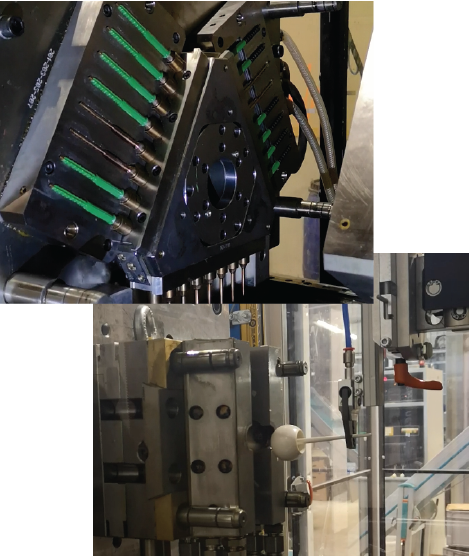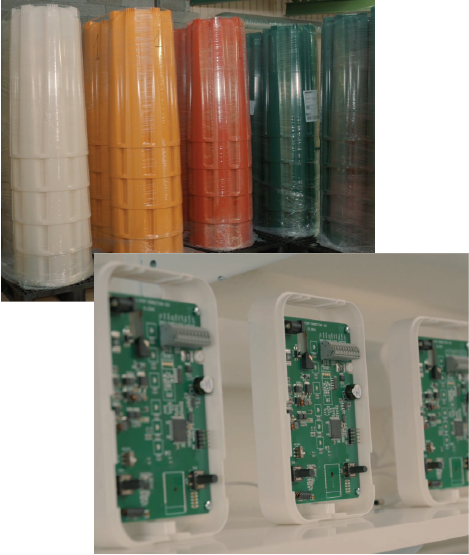Injection molding is a production method used in mass production of plastic products . If you are going to produce a product with complicated geometry, or have high requirements for surface finish, this may be the right method for you.
As a rule, we must take into account the preferred method of production during product development. In the final phase – design for production – we adapt to the very specific conditions related to the production method. For injection molding, it can include adding material to reduce shrinkage and twists, as well as inserting a drop angle on surfaces so that it is possible to get the product out of shape.
Then the process of developing a form tool is initiated, often referred to as mold. This is usually produced in CNC machined high-quality steel. When the form tool is fully developed, it is ready for test runs. Such test runs almost always lead to the need for fine-tuning of the form tool.
During production, plastic pellets are melted into a compressed liquid, which is sprayed into the mold through the form's duct system. The plastic will have time to cool and solidify, before pressing out a ready-made part. This part of the process is very efficient and is an automated part. It can take only up to a few seconds to produce a part.
There are many thousands of different variants of thermoplastics that can be used for injection molding, where material properties are affected through different forms of supply factors. This provides a tremendous degree of adaptation and flexibility. The most common categories of plastic used are: polyethylene (PE), polypropylene (PP), polystyrene (PS), polyamide (PA, often referred to as nylon), polycarbonate (PC) and acrylonitrile butadiene styrene (ABS). It is often used post-treatment methods where textures can be added.
We recommend our customers to use this method when producing large volumes. Developing form tools is a time-consuming process that involves a startup cost. However, there are many advantages to taking advantage of this production technique. Once you have developed the tool form, it can be used repeatedly and usually you only need to produce one mold. It is therefore more economically profitable to choose this method when producing large series. If smaller series are to be produced, we recommend using the vacuum forming production method.


Injection moulding is suitable for small and large products, from 1 mg to 60 kg. The technique is used for everything from packaging to car parts. We inject products into these market sectors: grocery, hotel, restaurant and catering, industry and environmental technology, pharmaceutical industry, medical equipment, construction, offshore and subsea, consumer market, electromechanical industry, renovation and recycling.
If necessary for the function of the product, several techniques can also be combined and assembled several parts into a complete product. The product Arjonstop, which we have developed, is a good example of that. 18 form tools are used to produce all the plastic parts, in addition it consists of parts not produced in plastic: motor, electronics, couplings and pressure transducer. The sphere in the middle is very hard and has high dimensional stability because it is spray molded in polyphenyl sulphonone (PPS). Standard pipe connections on the valve are made of three-quarter-empty stainless steel, which is mounted in the valve using advanced induction welding.